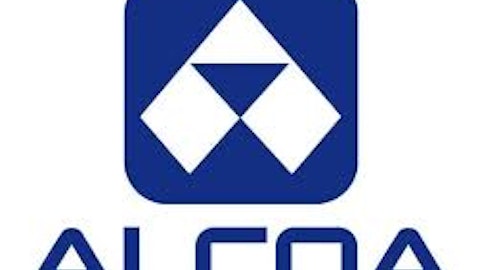On this day in economic and business history…
JPMorgan Chase & Co. (NYSE:JPM) was already one of the world’s largest banks when it merged with Bank One on July 1, 2004. However, folding the Chicago-based bank into JPMorgan Chase & Co. (NYSE:JPM)’s already substantial operations brought one very important change to the banking world: It put Bank One CEO Jamie Dimon in position to take over JPMorgan Chase & Co. (NYSE:JPM).
Dimon’s steady hand at the helm of a once-floundering bank — Bank One suffered from a great deal of technological incompatibility as a result of mashing so many smaller banks together at a rather rapid pace — helped right Bank One, establishing his reputation as one of the industry’s best executives. Dimon ascended to the corner office at JPMorgan Chase & Co. (NYSE:JPM) within two years of the merger, by which point the bank’s total assets had swelled beyond $1 trillion. That year, he earned the first of four (and counting) placements on TIME‘s list of the world’s 100 most influential people. A year later, in 2007, Dimon became a director of the New York Federal Reserve.
Dimon steered JPMorgan Chase & Co. (NYSE:JPM) through the financial crisis in a buyer’s mind-set, acquiring both Bear Stearns and Washington Mutual during the early days of the crash. As a result of his generally cautious (but acquisitive) stewardship, JPMorgan exited the financial crisis as the largest bank by assets in the United States. Dimon has often been held up as the best CEO in a floundering industry, but Fool contributor Morgan Housel finds that this praise rings somewhat false:
Since Dimon became CEO in late 2005, JPMorgan shares have returned -7%, including dividends. Dimon was paid $148.9 million during that time, according to S&P Capital IQ. An S&P 500 index fund returned 14.9% over the same period, and the average CEO earned a cumulative $71.9 million, according to Forbes. …
Of course, shareholder returns aren’t always the best way to measure CEO performance. But even judged by internal metrics the results are mixed. JPMorgan has posted an average return on assets — arguably the most complete measure of a bank’s performance — of 0.8% under Dimon’s lead. … A collection of the 50 largest public banks shows the group’s average return on assets since 2006 is 0.8%. Sort them in order, and JPMorgan ranks as the 31st best. Dimon may be one of the industry’s best CEOs in people’s minds, but on paper, he’s distinctly middle of the pack.
Another banking match made in heaven
JPMorgan Chase & Co. (NYSE:JPM) wasn’t the only bank to get bigger on July 1: The Bank of New York Mellon Corporation (NYSE:BK) was formed by the merger of BNY and Mellon on July 1, 2007. Popularly known as The Bank of New York Mellon Corporation (NYSE:BK), the new financial company combined deep historical roots and immense financial management assets.
The Bank of New York Mellon Corporation (NYSE:BK) was both the first bank in New York City and the oldest continuously traded company in the United States. It also owns the assets of the First Bank of the United States, which was America’s first brief experiment in central banking. Mellon Financial, though not quite as old, had over a century of its own history, which included the financing of three different past and present Dow Jones Industrial Average (Dow Jones Indices:.DJI) components (Alcoa Inc (NYSE:AA), Bethlehem Steel, and Westinghouse Electric). The two banks were also leaders in “custodial banking,” which is essentially the servicing of financial transactions and other related asset oversight. Together, they became the largest asset servicer in the world.
Today, The Bank of New York Mellon Corporation (NYSE:BK) has over $26 trillion in assets under its custody, nearly twice the amount overseen by its next-largest competitor.
The kiss of success
Hershey Co (NYSE:HSY) first began to produce its trademark Kisses on July 1, 1907. Though Hershey itself won’t confirm it, the popular theory of this candy’s naming stems from the “kissing” sound of the depositing machinery on conveyor belts. It was Hershey’s fourth year in operation at its groundbreaking Pennsylvania plant, and the Kisses were a great way for founder Milton S. Hershey to spread the love of chocolate in a bite-sized package. The little chocolates became a big hit, and Hershey Co (NYSE:HSY) now produces over 80 million Kisses each day at three different plants in the United States. Thanks to Hershey Co (NYSE:HSY)’s innovative mass-production methods, the world’s love of chocolate has since exploded into an industry with over $83 billion in annual global sales.
Opening the advertising floodgates
The first television commercial in history, for Bulova watches, aired during a baseball game between the Brooklyn Dodgers and the Philadelphia Phillies on July 1, 1941. Television had been an experimental technology since the late 1920s, but it wasn’t until the FCC began issuing licenses in 1941 that broadcasters were finally allowed to recoup the costs of the broadcast by selling time to advertisers. The ten-second ad cost Bulova a paltry $9 (roughly $150 today). Since it only reached 4,000 viewers, the ad’s low cost wasn’t too unusual.




